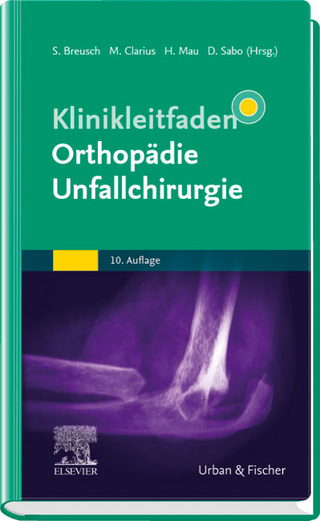
Structure and Function in Normal and Abnormal Hips
Springer Berlin (Verlag)
978-3-642-77979-4 (ISBN)
The book describes a new approach to the evaluation of x-rays of normal and mechanically abnormal hips, allowing visualisation of the forces responsible for their physiological function or pathological decay. Bone with its high perception to stress reacts with apposition or demolition, thanks to its cabled structure of collagenous fibres which form a frame around cavities created by the hydrostatic pressure. Bone is a pneumatic structure, a modern tyre, the best supporting construction. It can be maintained or promoted when: 1. The forces act perpendicularly to the plane of action; 2. The amount of stress is adequate to produce its elastic deformation; 3. Vascularity is preserved. Knowledge of the above-mentioned principles helps the reader to understand why, when, how and which surgical procedure is indicated.
1 Introduction.- 2 Biomechanical Interpretation of the X-rays of the Hip Joint: Interpretation of Pelvic X-rays.- 2.1 X-rays of the Normal Pelvis.- 2.2 How to Interpret the X-ray Appearances.- 2.3 Interpretation of Muscular Activity According to the Gothic Arch.- 3 Biomechanical Interpretation of Femoral X-rays.- 3.1 Relationship Between the Physis and the Neck-Shaft Angle.- 3.2 The Adult Femur.- 4 Osteotomies.- 4.1 Pelvic Osteotomy.- 4.2 Intertrochanteric Osteotomy: Classification of OA.- 4.3 The Role of Joint Cartilage.- 5 Bone Elasticity.- 5.1 How to Preserve Bone Elasticity in Total Hip Replacement.- References.
From the reviews of the second edition: "...the book supports the author's contention that a detailed examination of radiographs will allow an understanding of the bio-mechanics and evolution of the pattern of degenerative change in osteo-arthritis of the hip, and will allow intelligent planning of surgery... I would warmly recommend this text..." #The British Journal of Radiology# "This book is a must for those of us about to consider a THR and for those radiologists interested in the why and wherefore of this common joint lesion." #Australasian Radiology# "This is a beautifully illustrated book and provides worthwhile reading for orthopaedic registrars and surgeons interested in surgery of the hip joint." #South African Medical Journal#
From the reviews of the second edition: "...the book supports the author's contention that a detailed examination of radiographs will allow an understanding of the bio-mechanics and evolution of the pattern of degenerative change in osteo-arthritis of the hip, and will allow intelligent planning of surgery... I would warmly recommend this text..." #The British Journal of Radiology# "This book is a must for those of us about to consider a THR and for those radiologists interested in the why and wherefore of this common joint lesion." #Australasian Radiology# "This is a beautifully illustrated book and provides worthwhile reading for orthopaedic registrars and surgeons interested in surgery of the hip joint." #South African Medical Journal#
| Erscheint lt. Verlag | 16.12.2011 |
|---|---|
| Zusatzinfo | VIII, 211 p. 423 illus. |
| Verlagsort | Berlin |
| Sprache | englisch |
| Maße | 193 x 270 mm |
| Gewicht | 495 g |
| Themenwelt | Medizinische Fachgebiete ► Chirurgie ► Unfallchirurgie / Orthopädie |
| Schlagworte | Arthrose • Biomechanics • Bone • Cartilage • Hip • Hüfte • Hüftgelenk • Hüftgelenkentzündung • Hüftnahe Oberschenkelosteotomie • Knee • Oberschenkelknochenentzündung • Osteoarthritis • Osteoarthrose • Osteotomy • Radiology • Surgery • THR |
| ISBN-10 | 3-642-77979-4 / 3642779794 |
| ISBN-13 | 978-3-642-77979-4 / 9783642779794 |
| Zustand | Neuware |
| Haben Sie eine Frage zum Produkt? |
aus dem Bereich


